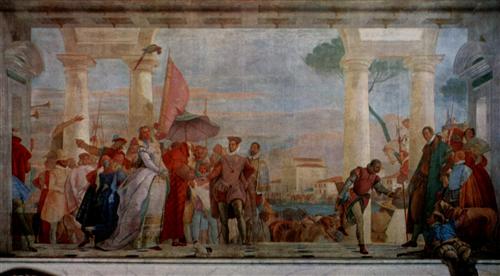Europeans and Americans tend to agree about at least one point: the built environment of the US is much newer and more homogeneous than that of Europe. Europeans, we assume, live in towns that date back to Roman times and have developed in their own, richly idiosyncratic ways for millennia. Meanwhile, we Americans live in suburbs that were designed by developers since the Kennedy Administration. That’s why we get out our cameras and guidebooks and head across the ocean for history.
There is some truth to this, but it can be exaggerated. As tourists, we get a biased sample of European communities because we choose to visit the oldest and best preserved ones. And Europeans get a somewhat biased picture of the US from TV. Most of the populous European cities and metropolitan areas are basically outgrowths of the industrial revolution. They expanded dramatically between 1830 and 1914. Then most of them were badly damaged by wars or social upheavals in the twentieth century and heavily rebuilt. Meanwhile, the great Eastern and Midwestern cities of the United States date back to the 1800s and often developed rather conservatively since World War One.
For example, Philadelphia was the second largest city in the British Empire at the time of Independence. That means that only London had more houses in Ben Franklin’s day. In both London and Philadelphia, many of the buildings that stood in 1776 were subsequently knocked down by developers, fire, or–in the case of London–by German bombs and missiles. I suppose London still has more buildings left over from the 18th century, and it has a few prominent relics from the middle ages and renaissance. But 281,000 extant structures in the Philadelphia metropolitan area were built before 1919 (pdf, p.15). This partly explains why Philadelphia–like Chicago, Charleston, and Cleveland–has a highly distinctive culture.
